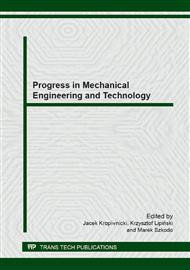p.137
p.145
p.153
p.159
p.165
p.171
p.179
p.185
p.193
Analysis of Rolling Resistance of Tires with Run Flat Insert
Abstract:
Run flat properties are required for tires intended for special applications like military or rescue vehicles. Run-Flat inserts make possible to drive a car or truck, with certain restrictions, also when inflation pressure is very low or non-existing (after tire damage). Rolling resistance of tires rolling on the inserts increases considerably in relation to the rolling resistance of properly inflated tires. This paper presents results of rolling resistance measurements for such conditions.
Info:
Periodical:
Pages:
165-170
Citation:
Online since:
December 2013
Keywords:
Price:
Сopyright:
© 2014 Trans Tech Publications Ltd. All Rights Reserved
Share:
Citation:


